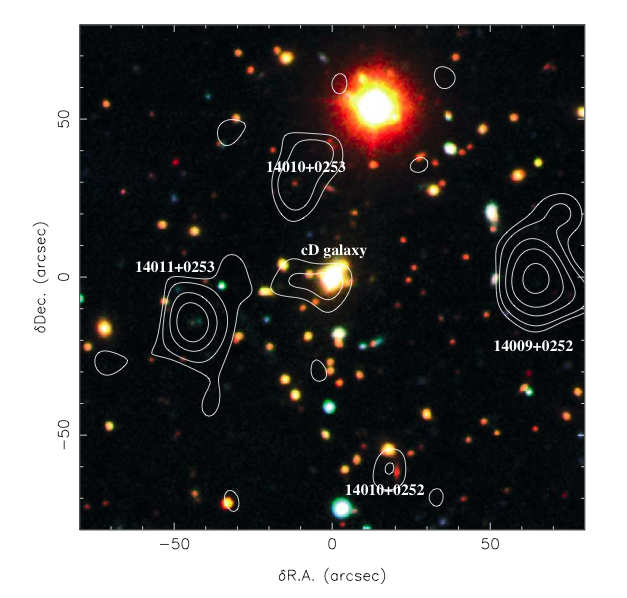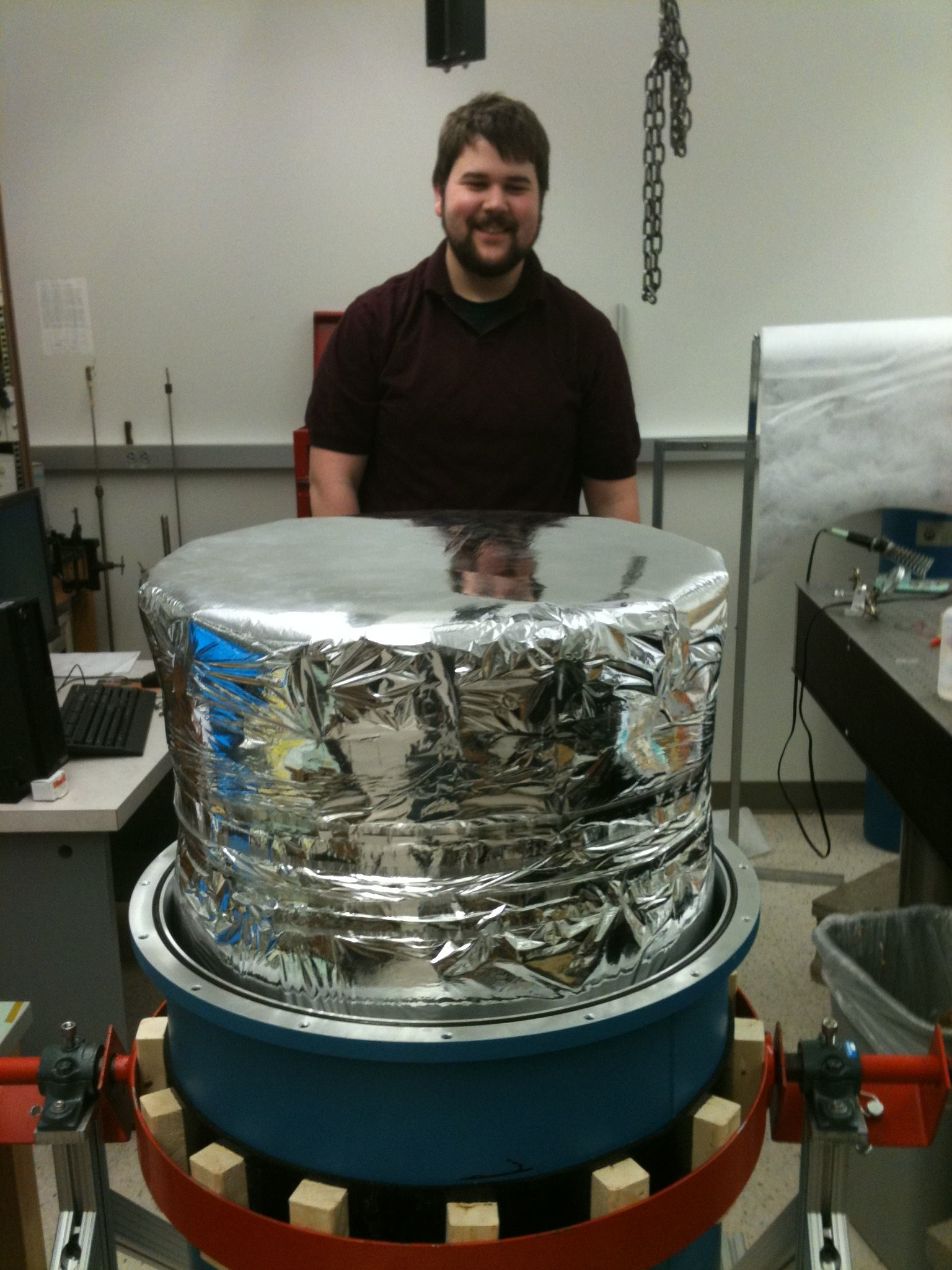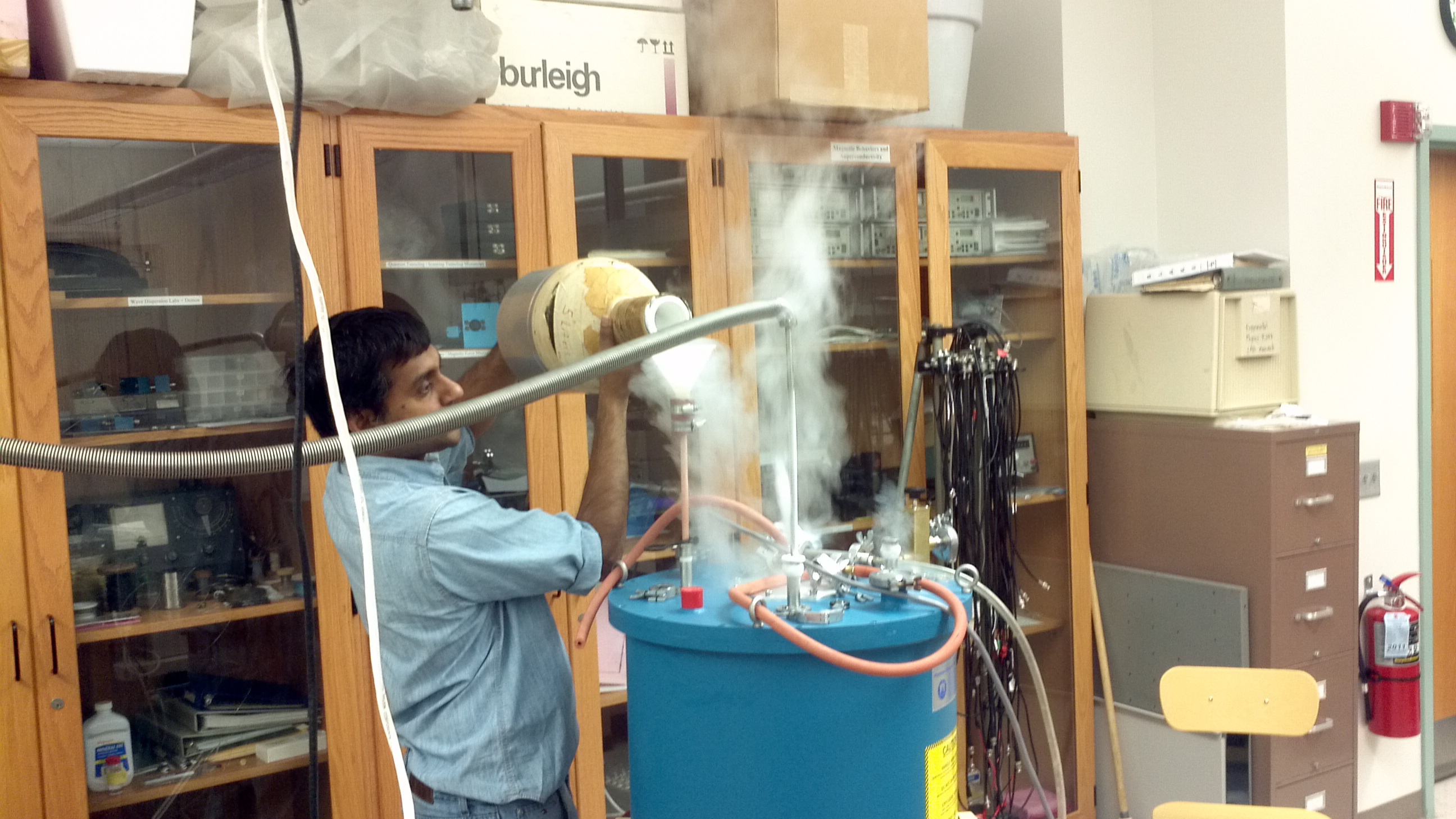Millimeter-wave AstronomyMy research revolves around millimeter-wavelength radiation that comes to us from space. By mm wavelengths, I mean light with wavelengths in the range 0.2 mm to 5 mm. When you look at a dark patch of sky at night, the visible light within that patch of sky is dominated by astronomical objects -- usually stars. This is because nothing else between us and the star emits visible light (0.0004 to 0.0007 mm wavelengths). On the other hand, if you could look at a patch of night sky using mm-wavelength light, what you see will be dominated by terrestrial objects such as our atmosphere, clouds within it, and our own eyes because they all radiate mm-wave light. Given this difficulty, why would anyone want to look at astronomical objects using mm wavelengths? There are two reasons: First, the oldest light in the universe, created in the big bang, is brightest at mm wavelengths. This radiation, known as the Cosmic Microwave Background is the original reason for the existence of mm-wave astronomy. Second, many interesting astronomical environments such as stellar "nurseries" and very young galaxies are enveloped by dust, which blocks visible light from getting to us. However, this cosmic dust emits mm-wave radiation. Figure 1 below shows an example of this effect. Therefore, mm-wave astronomy holds the key to uncovering secrets about such environments.  Figure 1: The color photograph is a visible-light image of a rich cluster of galaxies (Abell 1835). The overlaid contours indicate the mm-wave brightness within this cluster. As you can see, of the four galaxies that are brightest in mm-waves, three are either very faint or invisible with visible light. Image taken from Blain et al, Physics Reports, 369, 111, 2002. My Interests1. InstrumentationAs mentioned above, it is very difficult to view astronomical objects with mm-wave light because there are many sources of intervening (or "foreground") emission. These observations are challenging for several other reasons as well. Due to the difficulties involved, developing instruments and techniques for mm-wave astronomy is a vibrant research area. This was the research I worked on while at the University of Chicago as a postdoctoral fellow (2002-2005). Here is a link to that research. Due to my continued interest in this area, I plan to contribute to this type of research -- developing technology and methods for mm-wave observations -- in the future.2. Mm-wave ObservationsI have also worked on making mm-wave astronomical observations. As a postdoctoral scholar the the University of Massachusetts Amherst (2005-2008), I helped install and operate a camera sensitive to mm-waves on telescopes at high-altitude sites in Hawaii and Chile. This instrument, named AzTEC, has since discovered many new astronomical objects that are bright at mm wavelengths. I am part of the AzTEC collaboration and have contributed to the analysis of astronomical data from this instrument. Here is a link to AzTEC . My recent publications involving AzTEC can be found there. I am presently working on developing and characterizing data analysis tools for AzTEC. One IWU physics major has contributed to this research thus far. I hope to involve more students in this work in the near future.3. Laboratory AstrophysicsBefore arriving at IWU, I worked on instrumentation and observations aimed at studying dusty regions of space using mm wavelengths. Once here, I decided to pursue a third research direction: the study of cosmic dust analogs in the lab. In particular, I am interested in the emission and absorption of mm-wave light by these dust species at astronomically relevant temperatures (20 to 80 Kelvin or -253 to -193 Celsius). These dust species are called cosmic dust analogs because no one knows the exact constitution of dust in various astronomical environments. Therefore, I will study a variety of hypothesized dust species. They include carbonaceous grains such a graphite as well as various silicate species.This type of research is classified as Laboratory Astrophysics because it aims to study astronomically interesting objects/samples in the lab. This has been my main research direction since the beginning 2011. So far, I have designed and ordered a cryostat (a very cold refrigerator) that can be cooled to 4 Kelvin (-269 Celsius). The dust samples and mm-wave light detector will be cooled down within this cryostat. Four IWU physics students have thus far participated in getting the cryostat ready for its first cooldown. We carried out the first successful diagnostic cooldown of this cryostat in December 2011. With help from more interested students, our next cooldown will include the mm-wave detector and a dust sample. Below are several pictures of the cryostat and related apparatus.  Figure 2: The cryostat is the blue cylinder. behind and to its left is a liquid helium storage tank. You can also see the pumping/vacuum station in front, and the cryostat hoist above. The structure/cart that holds the cryostat as well as the vacuum station were built by IWU physics students. Most of the thermometers, associated cables and electronics, as well as special insulation within the cryostat were also made and installed by students.
|


